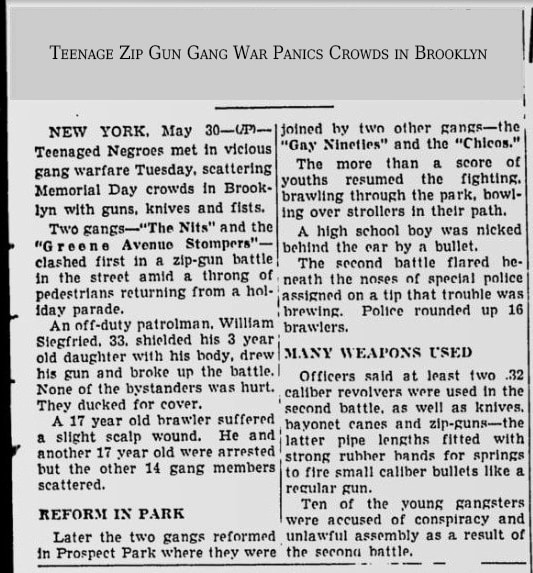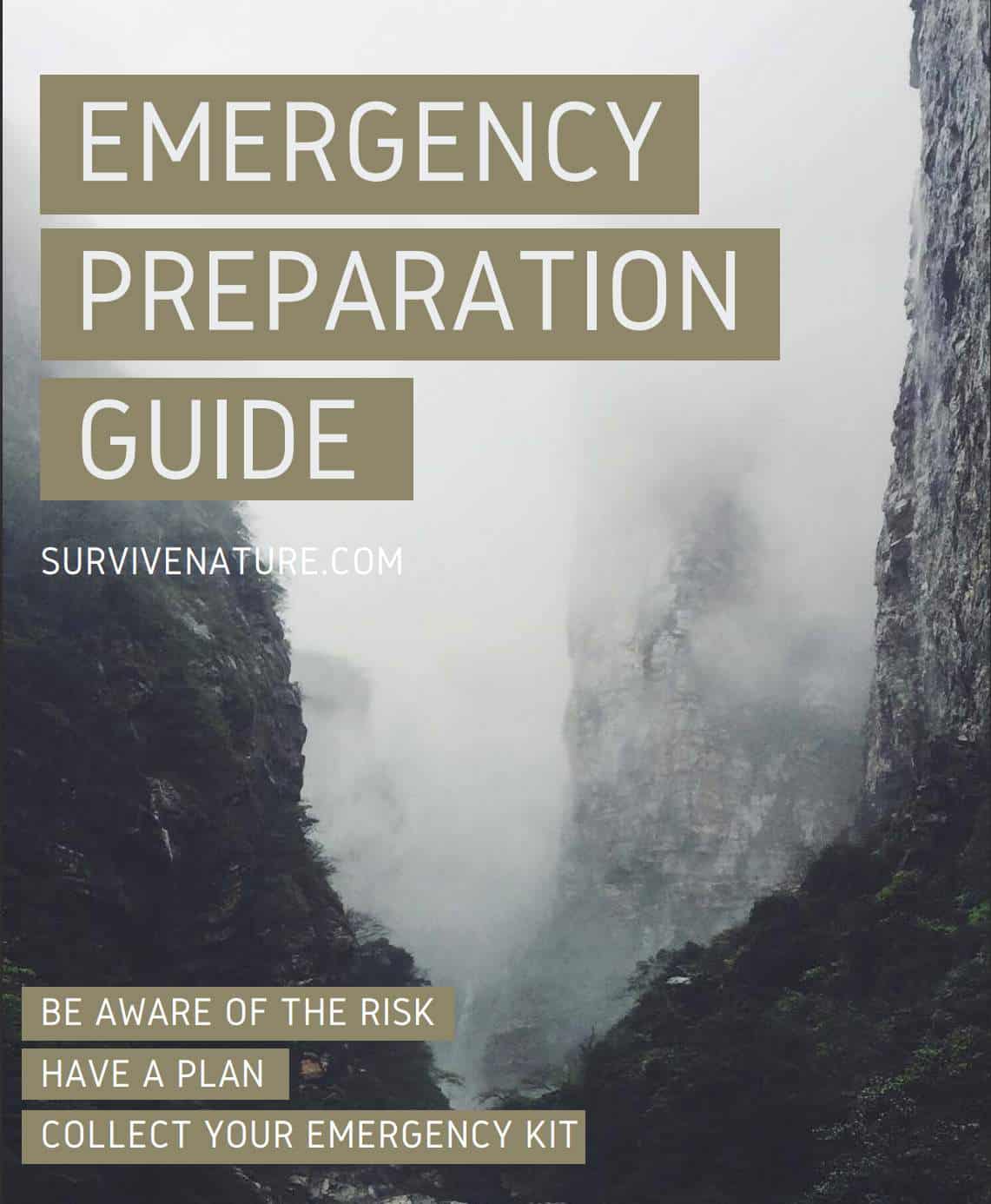Introduction
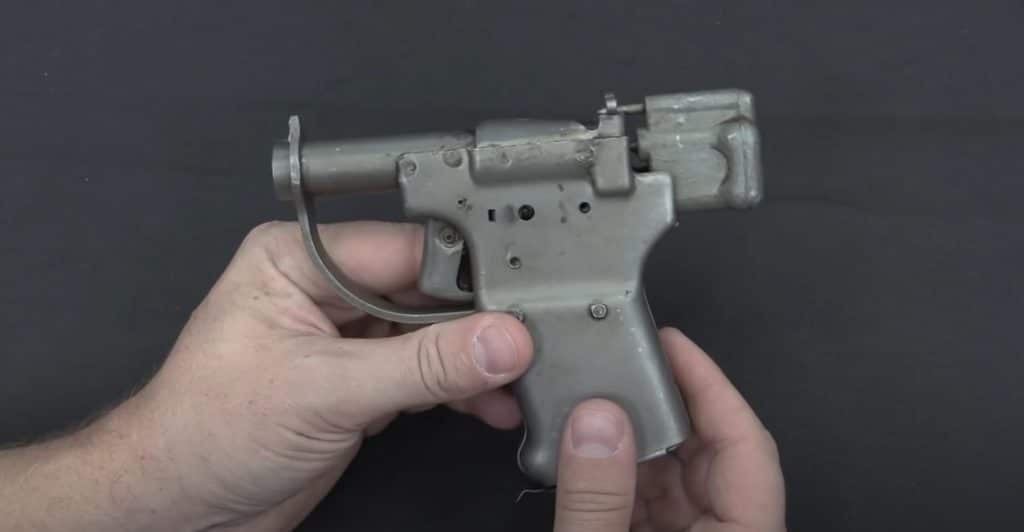
This article has been revised and finalized to reflect the latest information as of 2023
The very first zip gun was manufactured during the Second World War and was called a “Liberator”, as it was made for the purposes of freeing occupied people from the enemy’s hands. Their production was cheap and fast, the qualities that were a top priority of the States during the war.
However, the story of zip gun’s global spread started somewhere around the 1950s and is often associated with criminals, such as street gangs and teenagers that were the main manufacturers of such a weapon, as well as a part of the drug trade chain. It was often the case that teens made such pistols to be able to fight other street gangs with their help.
When seeing a zip gun constructed in some movie or even in real life, do not become misled by its look: it definitely can bring someone a lethal injury which might be even worse than that of the traditional gun.
This article has been revised and finalized to reflect the latest information as of 2023
The Legality of Using a Zip Gun
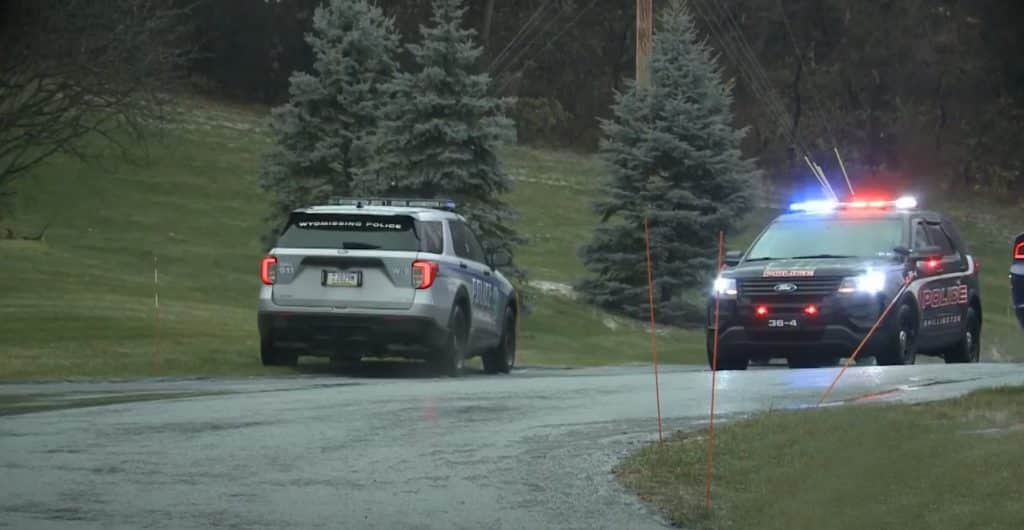
The use, possession, and manufacture of zip guns can have significant legal consequences, depending on the jurisdiction. Here’s a comprehensive overview of the legal aspects surrounding zip guns:
1. Federal Laws:
In the United States, federal laws regulate the manufacture, sale, and possession of firearms. Under the Gun Control Act (GCA) of 1968:
- Manufacture: An individual can manufacture a firearm for personal use without a license. However, it’s illegal to manufacture firearms for sale or distribution without a Federal Firearms License (FFL).
- Transfer: Transferring a homemade firearm, even as a gift, may require the firearm to have a serial number and the transfer to be conducted through an FFL.
- Prohibited Persons: The GCA prohibits certain individuals, such as convicted felons, from possessing firearms, including zip guns.
2. State Laws:
State laws can vary widely, and some states have stricter regulations than federal laws:
- California: Zip guns are illegal to manufacture, possess, or sell. California defines a zip gun as any device or combination of parts that can expel a projectile through an explosion, and that isn’t a commercially manufactured firearm.
- Texas: It’s illegal to manufacture, sell, repair, or alter a zip gun. Possession can lead to criminal charges.
3. International Laws:
Outside the U.S., many countries have stringent laws against the possession and manufacture of improvised firearms:
- United Kingdom: The UK has strict gun control laws. Possession of a zip gun can lead to severe criminal charges, including imprisonment.
- Australia: Homemade firearms, including zip guns, are illegal and can result in significant penalties.
4. Safety and Liability:
Beyond criminal charges, there’s a potential for civil liability. If a zip gun malfunctions and injures someone, the manufacturer or possessor could be held liable for damages in a civil lawsuit.
5. Legal Alternatives:
For those interested in firearms, there are legal avenues to pursue, such as obtaining the necessary licenses and purchasing commercially manufactured firearms. Engaging in legal channels ensures safety and avoids potential legal pitfalls.
It should be noted that it is illegal for you to do any of the following things with zip guns in California:
- Import zip guns to the State;
- Manufacture them;
- Offer or keep zip guns for the sales;
- Lend a zip gun to someone;
- And even possess them.
In case of breaking the law, the person can be charged with either a misdemeanor or a felony, which in both cases could result in imprisonment of up to one or three years and/or significant fines ranging between 1000 and 10,000 dollars.
If protection is required by you, you would need to buy a gun from an official seller that has a license for such an activity, as otherwise, your handguns will be seized by the police and you will end up either in jail or with a big fee to be paid.
For other states, please check your law on this matter before deciding to make a zip gun by yourself: it is highly probable that some of them will give you an opportunity to keep a zip gun for personal use, but not for others.
What is a Zip Gun?
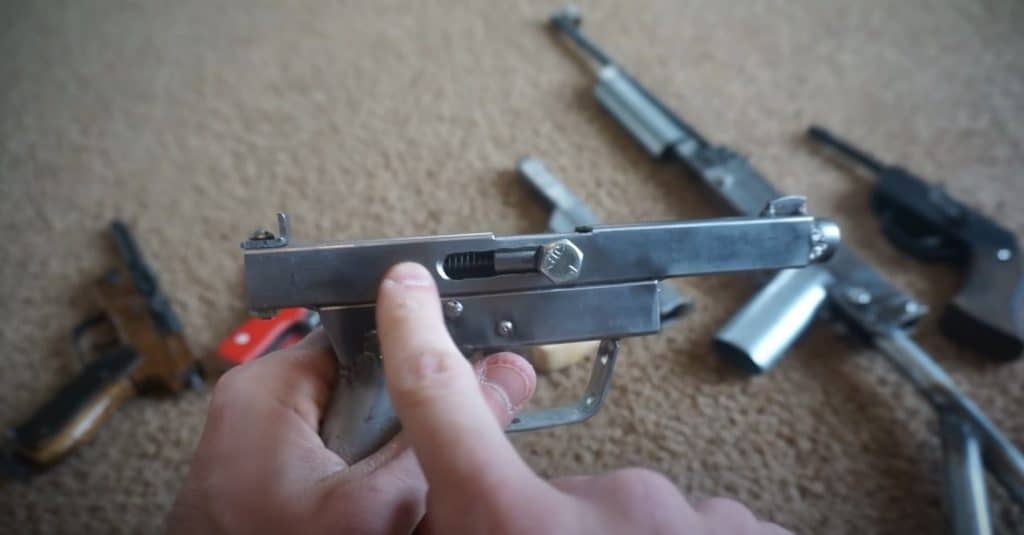
A zip gun is a self-made cheap gun that can be constructed with the help of some tools that you could have and with the help of the materials found in local hardware stores, which is why it was mostly produced by teenagers and gangs that cannot afford to buy good-quality weapons in the stores.
For instance, it was a common story for boys to be able to figure out that a .22 rimfire is a perfect fit for some steel pipe and then come up with an idea of how to trigger the mechanism and ensure that the whole structure will not fall into pieces.
A zip gun is quite simple in its construction, which is why you should not expect that it could be used more than once. In addition, the first versions of a zip gun were as dangerous for its users as they were for the aims of that person: the construction is far from stable, which means that the bullet might start to shatter at the very beginning of the fired shot and explode at its shooter.
Consequently, keeping in mind the fact that the use of a zip gun is illegal in many places in the modern world, you should leave your knowledge about them and their construction only to survival situations.
Bigger versus Smaller Zip Guns
When it comes to survival situations and protection of yourself and your loved ones, the smaller your zip gun is, the better.
Such zip guns have better agility and their chamber pressure is not as high as that of bigger zip guns. Chamber pressure basically defines the force of the fired shot and thus, your probability of losing your finger or even a hand while making it. In addition, bigger calibers would mean that you would need to use thicker and more expensive steel for your zip gun so that the gun would not explode itself when you are firing it on some target.
What is more, a smaller homemade gun is easier to hide and travel with, which is especially important in survival situations when everything should be as small and light as possible.
We would say that a .32 caliber round is the biggest size that you should choose for your homemade zip gun construction, with a .22 one being your best choice, as it is easier to find a ready-made pipe with such a diameter.
History of Zip Guns
Historical Context of Zip Guns
Zip guns, often referred to as improvised firearms, have a rich history that spans continents and eras. Their existence is a testament to human ingenuity and the desire for self-defense, especially during times of conflict or when conventional firearms were inaccessible.
1. World War II Era:
- The Liberator: One of the most famous zip guns was the FP-45 Liberator, produced by the U.S. during World War II. Designed to be airdropped to resistance fighters in occupied territories, it was a simple, single-shot .45 caliber pistol intended to eliminate enemy soldiers and acquire their weapons.
- European Resistance: In occupied Europe, resistance fighters often resorted to crafting homemade firearms due to the scarcity of conventional weapons. These were used in guerrilla warfare tactics against occupying forces.
2. Post-War Urban Streets:
In the post-war era, especially in urban settings, zip guns became synonymous with street gangs and juvenile delinquents. Their ease of manufacture made them popular among those who couldn’t legally obtain firearms.
3. Prisons:
Prisons worldwide have seen the ingenuity of inmates crafting zip guns or “shanks” from available materials. These improvised weapons are often used for self-defense or gang-related activities within prison walls.
4. Conflict Zones:
In modern conflict zones, where arms embargoes are in place or where conventional weapons are scarce, rebels and militias have been known to craft improvised firearms. These weapons, while not as effective as military-grade firearms, serve as tools of resistance.
5. The Philippines and the Paliuntod:
During World War II, the Filipinos crafted a unique zip gun known as the “paliuntod.” This was a response to the invading Japanese forces. The paliuntod was a rudimentary shotgun, and its design and use showcased the resilience and resourcefulness of the Filipino resistance.
6. Modern Day:
While the advent of stricter gun control laws in many countries has reduced the prevalence of zip guns, they still surface in regions with heavy firearm restrictions or where conventional weapons are hard to come by. Their simplistic design ensures that they remain a part of the global landscape of improvised weaponry.
Making a zip gun at Home
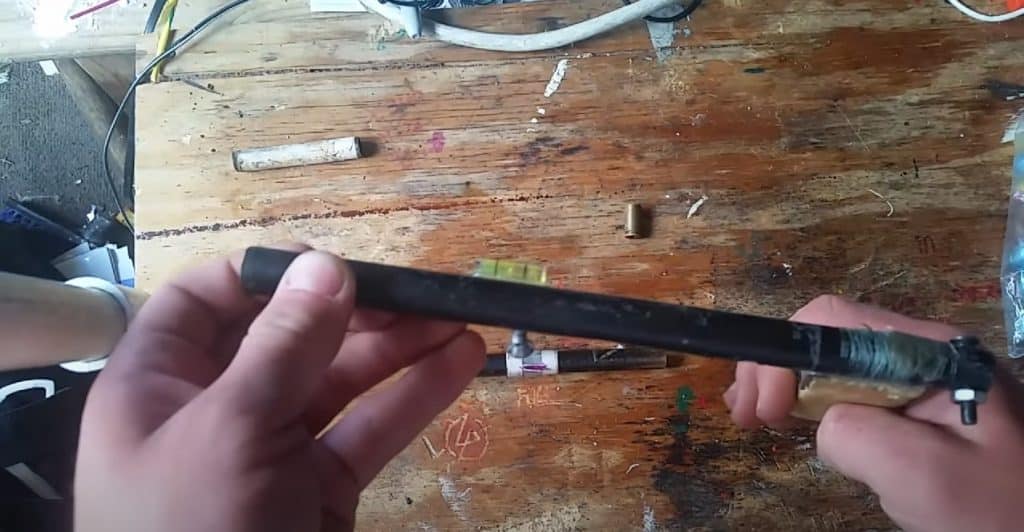
Once again, please remember to check your federal law on this matter before starting to make zip guns in the conditions far from survival ones, as you need to comply not only with the fact of having approval for personal use or not but also with the way that the pistol should be constructed and what could be done with it inside your state and outside of it as well.
For instance, your approved zip gun most probably will need to have a rifled barrel, which is the thing that most zip guns do not obtain. Otherwise, some problems might occur with your local police station and your guns will be seized.
Moving further, making a zip gun at home is not a hard process, especially if you have all of the required supplies as it is shown in the video below:
The very first and the hardest thing that you will need to do is finding a decent steel tube that is strong enough to bear the pressure of a gunshot. The most popular pipe is a brake line one, as it has a convenient .22 diameter and a hydraulic pressure line. In addition, it is also better to choose a barrel that would have a short length, as this would allow you to hide the gun in a bigger variety of places.
The most simple thing that you could do to be able to create a zip gun is take your barrel and attach it to your grip that has a springy metal placed on its back.
Here is list of supplies that will be needed for such a gun construction:
- A metal pipe as a barrel (such as a brake line one)
- A metal strip acting as a hammer(springy in the best case scenario)
- Rubber band in case the metal strip is not flexible
- A grip
- Three screws
- Two pieces of duct tape
- An end cap
When choosing this construction of your improvised firearms with .22 cartridge, make sure that you have positioned a screw tightly to the rim of the cartridge after drilling the elastic metal strip. For a larger diameter of bullets, the screw should be placed near the primer of a centerfire cartridge. For both cases, remember to also cut the point off of the screw.
In cases when the metal strip is not flexible, you could also try to use the strip that you already have and wrap an elastic band (or a few extra rounds of rubber bands) around the grip and the strip: that way your non-flexible strip will act as a hammer for your shotgun.
Another problem that could occur with buying appropriate supplies for your zip gun is finding a place that would sell you .22 LR ammunition, as not every state allows them to be sold to everyone. What you can do here is buy 0.22 cartridges for a nail gun and then find a box of .22 pellets at any store that sells those in your area, for example, Waldens.
This choice might be more time-consuming, but at the same time, it will also be more efficient, as you will have an opportunity to choose power blanks by yourself, and buying the most powerful ones will definitely make your single shot faster. However, if not able to find such, weaker options will still give you an opportunity to kill something like a rabbit.
In the Youtube video below you can see for yourself how different blanks change the speed of your single shot.
Other Zip Gun Specs
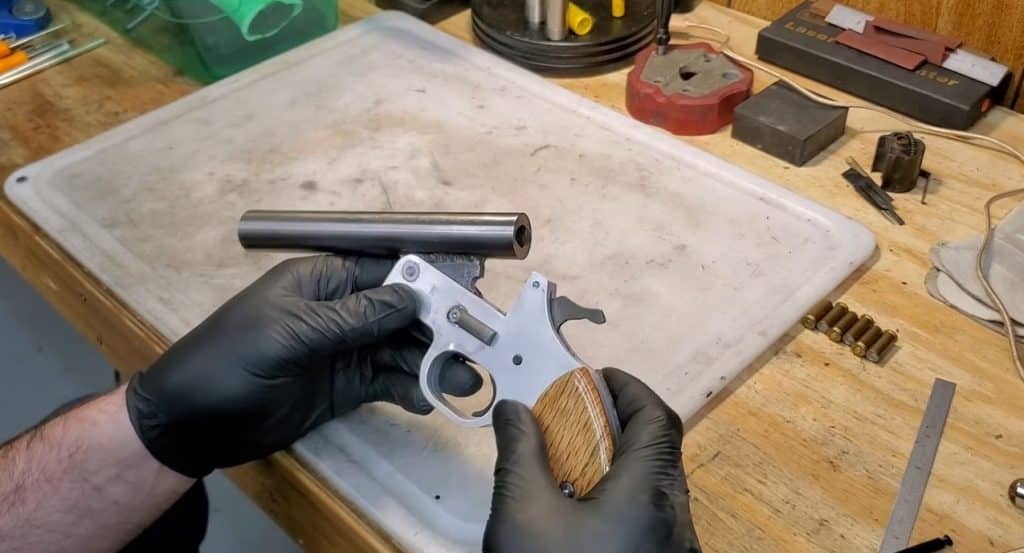
You should also know that making a zip gun is not the only option that you can do by yourself at home, but it is definitely the easiest one.
For example, it is even possible to make an actual gun, like the ones that you see at the stores, with your own hands. However, it is, of course, not an option for everyone, as it is definitely more time-consuming and harder to make: you will need more tools, more knowledge, and more patience.
The next option is somewhere in-between a zip gun and an actual one, and it will bring you better quality than that of improvised weapons and complexity that is still bearable in home conditions of a rookie. So what you can do is use a real trigger and hammer (striker) to fire a round instead of flexible metal strips or elastic bands.
You could also take a .22 pellet rifle and transform it in a way that it would allow you to use .22 LR ammunition. This is legal in the States, but as for other countries, you need to check a federal law on this matter, as you might need a license to do that.
All in all, your advanced options of a single shot zip gun depend on your knowledge, creativity, materials that you could find and laws under which you live.
Safety Precautions: The Dangers of Zip Guns
Zip guns, by their very nature, are improvised firearms crafted from non-standard materials. While they may serve a purpose in desperate situations, their use comes with significant risks. Here are the potential dangers and safety precautions one should be aware of:
1. Unpredictable Malfunctions:
- Explosions: Given that zip guns are not made to industry standards, there’s a risk of the gun exploding upon firing. This can result in severe injuries to the hand, face, and eyes.
- Misfires: A zip gun might not fire when the trigger is pulled, but it could discharge unexpectedly later, posing a danger to the user and those around them.
2. Inaccurate Aim:
Most zip guns lack rifling, which stabilizes the bullet in flight. This can result in unpredictable trajectories, making the gun inaccurate and potentially hitting unintended targets.
3. Material Weakness:
The materials used in zip guns, like pipes or scrap metal, might not withstand the pressures generated by firing a bullet. This can lead to the gun breaking apart and causing shrapnel injuries.
4. Lack of Safety Mechanisms:
Commercially manufactured firearms come with safety mechanisms to prevent accidental discharges. Zip guns typically lack these features, increasing the risk of unintentional firing.
5. Legal Ramifications:
Possessing, manufacturing, or using a zip gun can lead to criminal charges in many jurisdictions. Beyond the physical dangers, individuals risk legal consequences, including imprisonment.
6. Handling and Storage:
Improper handling and storage can lead to accidental discharges. Always treat a zip gun as if it’s loaded and store it away from children and unauthorized users.
Safety Tips:
- Avoid Use: Unless absolutely necessary, avoid using a zip gun. The risks often outweigh the benefits.
- Professional Training: If one must use a zip gun, seek training from firearm professionals to understand the basics of gun safety.
- Safety Gear: Always wear safety goggles and protective gloves when handling or firing a zip gun.
- Regular Inspection: Before any use, inspect the zip gun for any visible damages or weaknesses.
- Stay Informed: Be aware of the legal implications and local laws regarding zip guns in your jurisdiction.
Summing it up
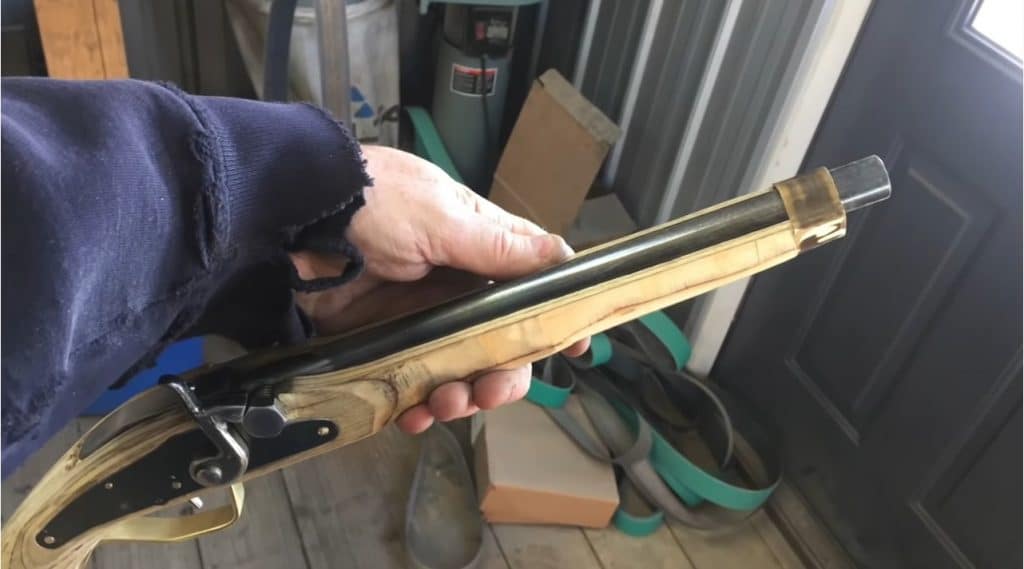
There are times when you need to obey the laws and times when jurisdiction does not play much of a role in society. An example of the latter case might be a survival situation when there is some war going on or revolutions taking place.
Consequently, in situations when you cannot rely on the police to protect you and your family, you will need to take matters into your own hands and either buy a shotgun or make one at home. In cases when you do not have money to buy a gun or there is simply nothing left at the stores, creating a zip gun will be your best choice.
While zip guns are not the perfect solution, they have proved themselves to be efficient enough for self defense: when shooting at close targets, you could even kill someone. In addition, they will buy you some time for making a better version of your firearms or for finding a hardware store that still sells them.
In this article, we are not persuading you to go and break your laws by creating a handmade firearm, no. The only point that we make here is that you just need to know how to protect yourself in rare case scenarios when relying on the police is simply not enough. Remember that having a self made pistol is illegal in many places, thus, you will either end up in jail or with a big fee to be paid off, with your guns being seized in any case.
However, if you want to find a measure for protecting yourself even now, we would not recommend you to make firearms without checking your laws first. In case when you are not allowed to keep self-made firearms, it is always better than to buy more traditional weapons in some hardware store then to try your luck with getting caught by the police.
What is more, it will even be safer for you that way, as you will be sure of the quality of your pistol!
Frequently Asked Questions — FAQ
Are zip guns Illegal?
We cannot say for sure whether pen guns are legal or not in your exact situation. For example, we definitely do not know about firearms laws in other countries, not even about the United States, as here laws vary from state to state.
Due to that, you will need to check your rights about keeping weapons on your own.
Is Zip Gun effective?
Depending on your purposes and the construction of a weapon that you have managed to create: with a solid enough barrel and a caliber not bigger than .32, you will have a firearm that is decent enough for protection in survival conditions and even hunting for small animals like rabbits.
In other cases, you might even endanger yourself with such weapons, as they can backfire at you or have an incredibly high chamber pressure that could simply deprive you of your finder or even a hand: the fact that the guns were made at home does not deprive them of danger.
How does a zip gun Work?
The easiest way to construct zip guns is to take some barrel (like a metal tube) that would perfectly fit your bullets or a shotgun shell in its cartridge diameter and attach it to the grip that has a springy metal on its back.
How to use a zip gun?
Zip guns are crude weapons usually made for one shot, as they are not capable of withholding the pressure of a bigger amount of shots. When made correctly, the process of pulling the primer is not that different from a traditional pistol, the only difference is that instead of a firing pin, you will need to fire up your pistol by yourself.
Can I make a zip gun?
Yes, you can make a pistol at home. All that you would need for it is a decent metal barrel that has the diameter of your cartridge, a grip, three screws, and a flexible metal strip or a rubber band.
For more details on how to connect these details together to be able to fire from a homemade pistol, please read the article above.
How strong is a Zip Gun weapon?
Well, it is definitely not stronger than a professionally made pistol not only because of its manufacturing process but also because of its caliber size: a homemade cap gun is not capable of withholding chamber pressure higher than that of a .32 gun.
In addition, it is rarely the case that you could increase its efficiency by yourself, which means that zip guns will be able to hit only close targets or small objects like rabbits.
How to Keep a Zip Gun?
Ways that you could keep homemade handguns at your residence will differ depending on your country or even your state (if talking about the USA). For some places, you will have an opportunity to legally keep handguns at your home for protection, whilst in others, even this feature will be considered illegal by authorities and your local police.
Always check your state’s law before starting to make a shotgun.

